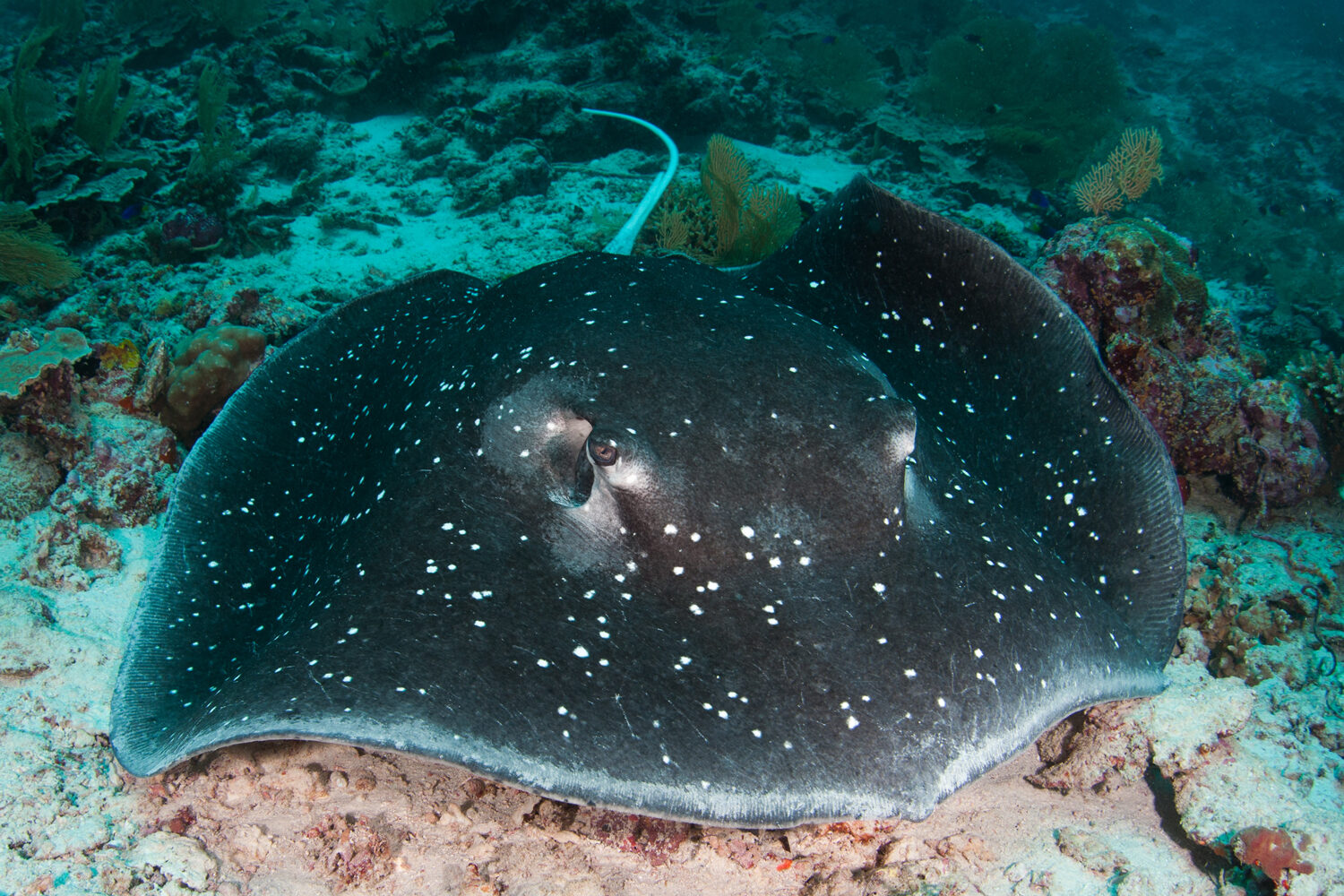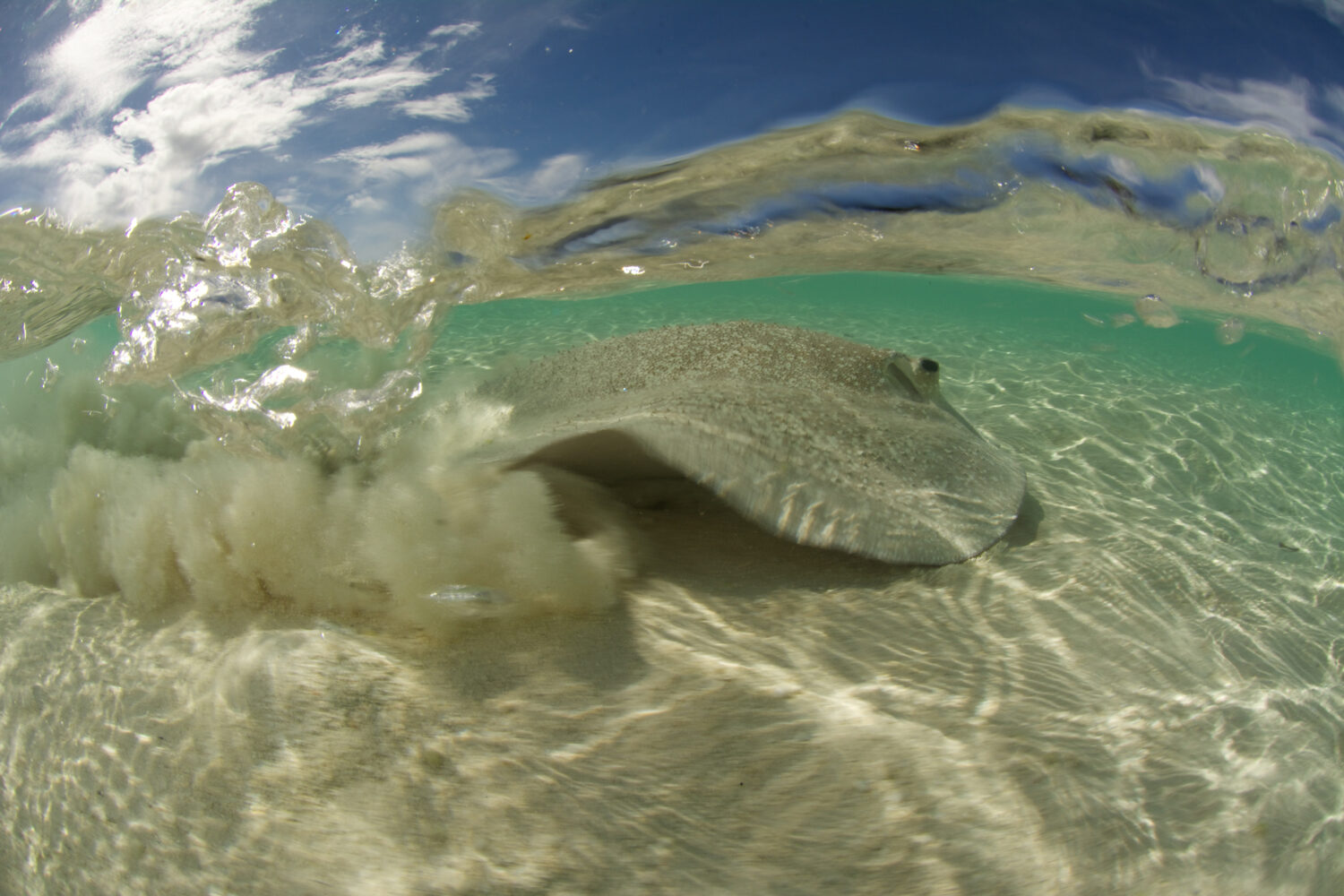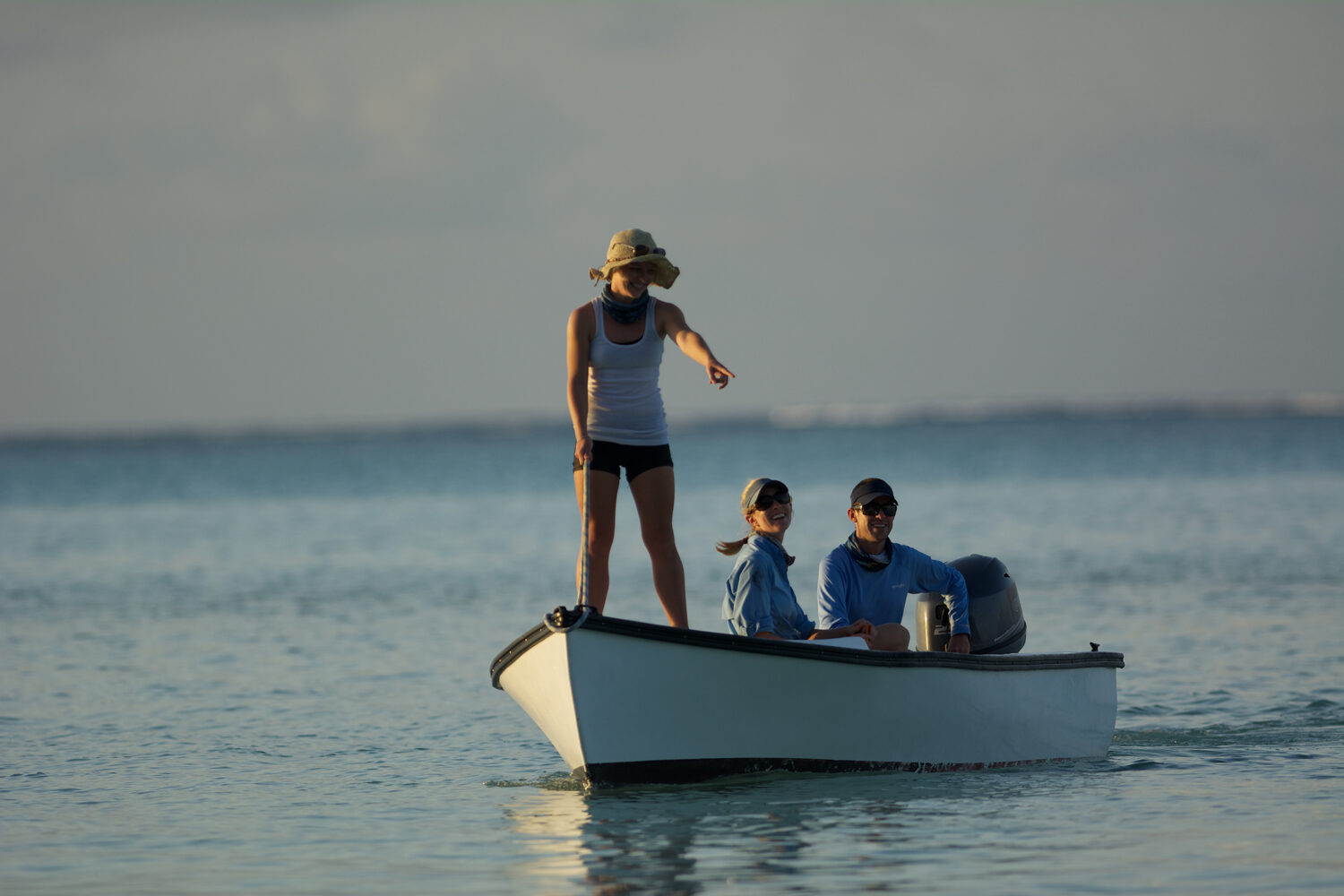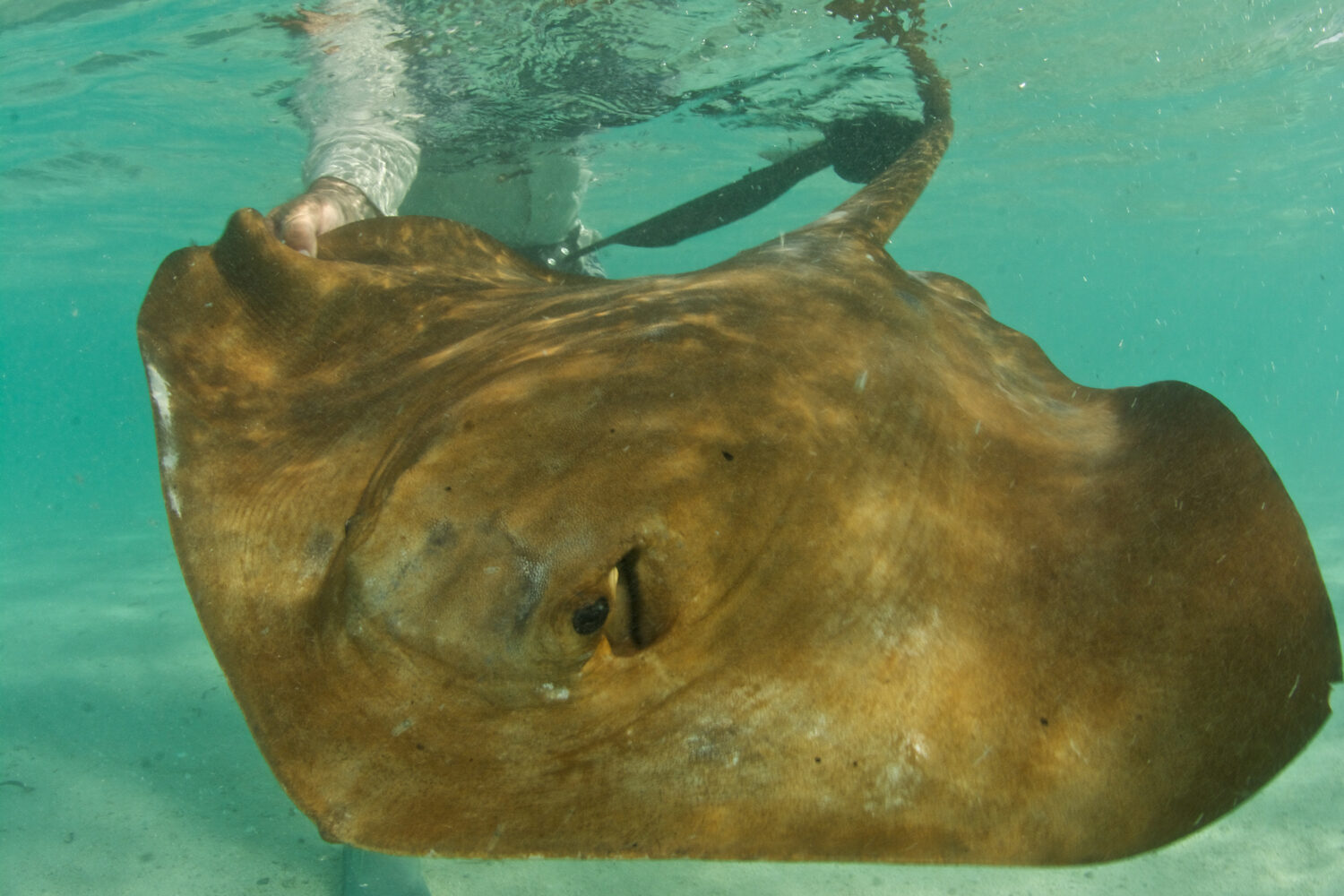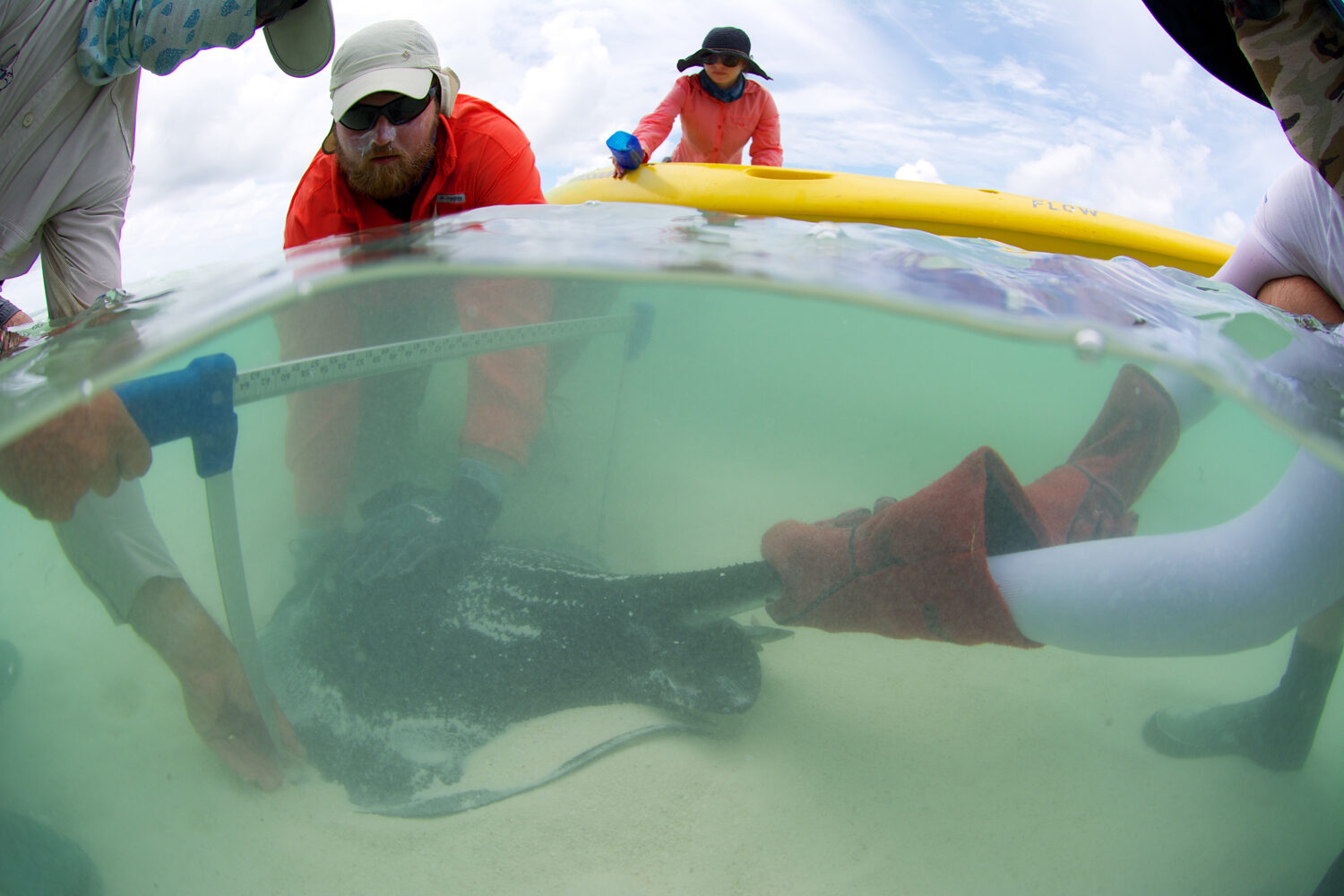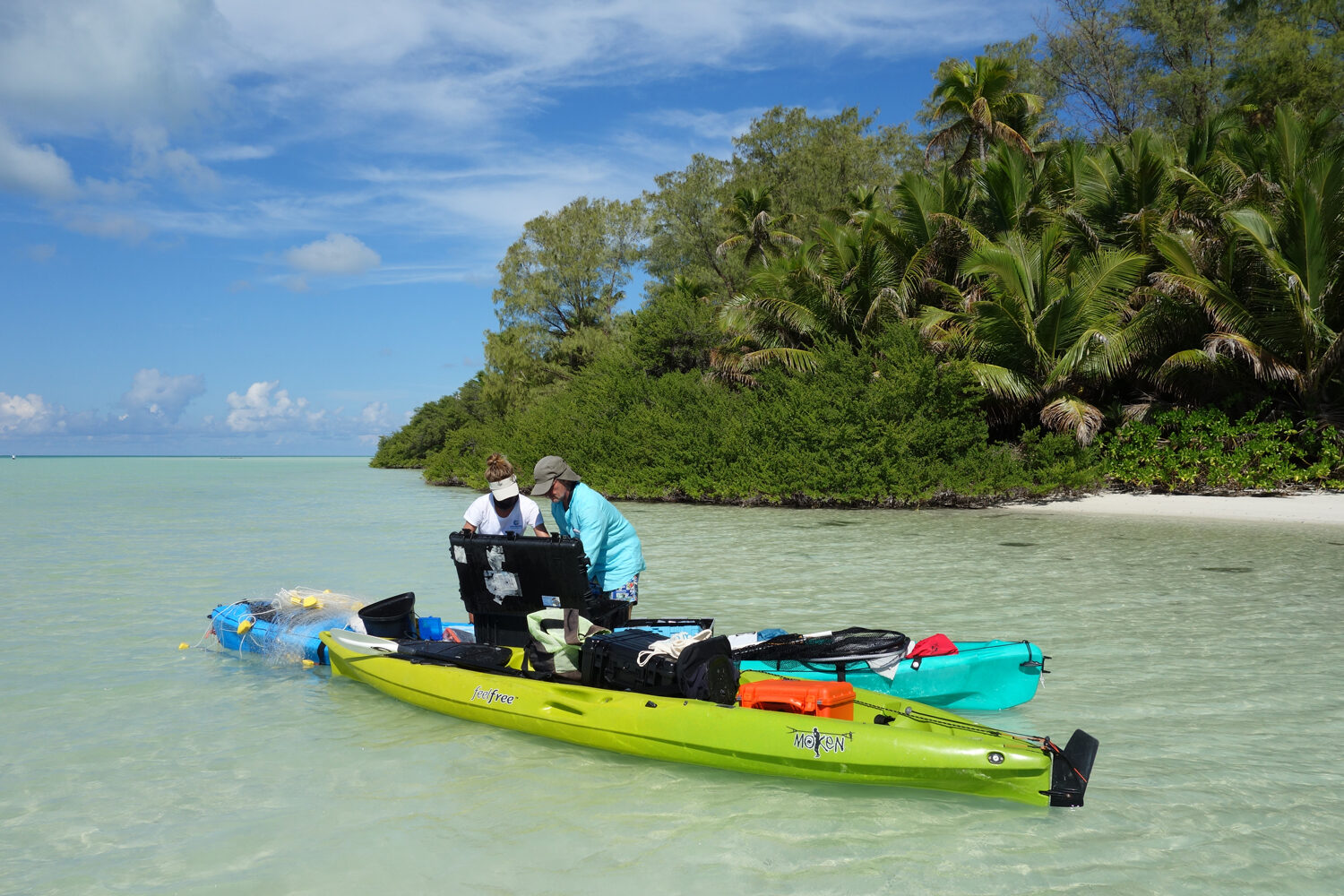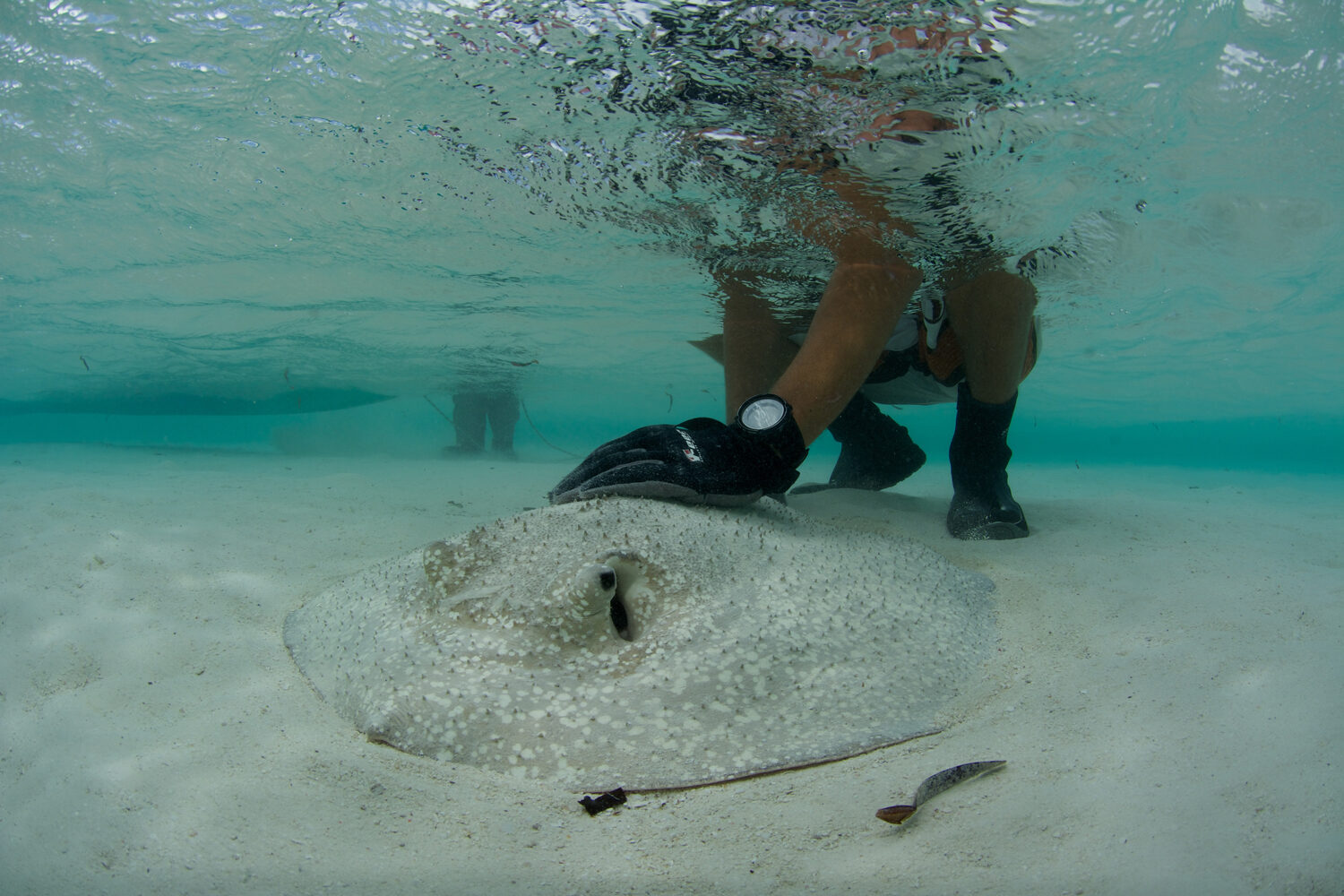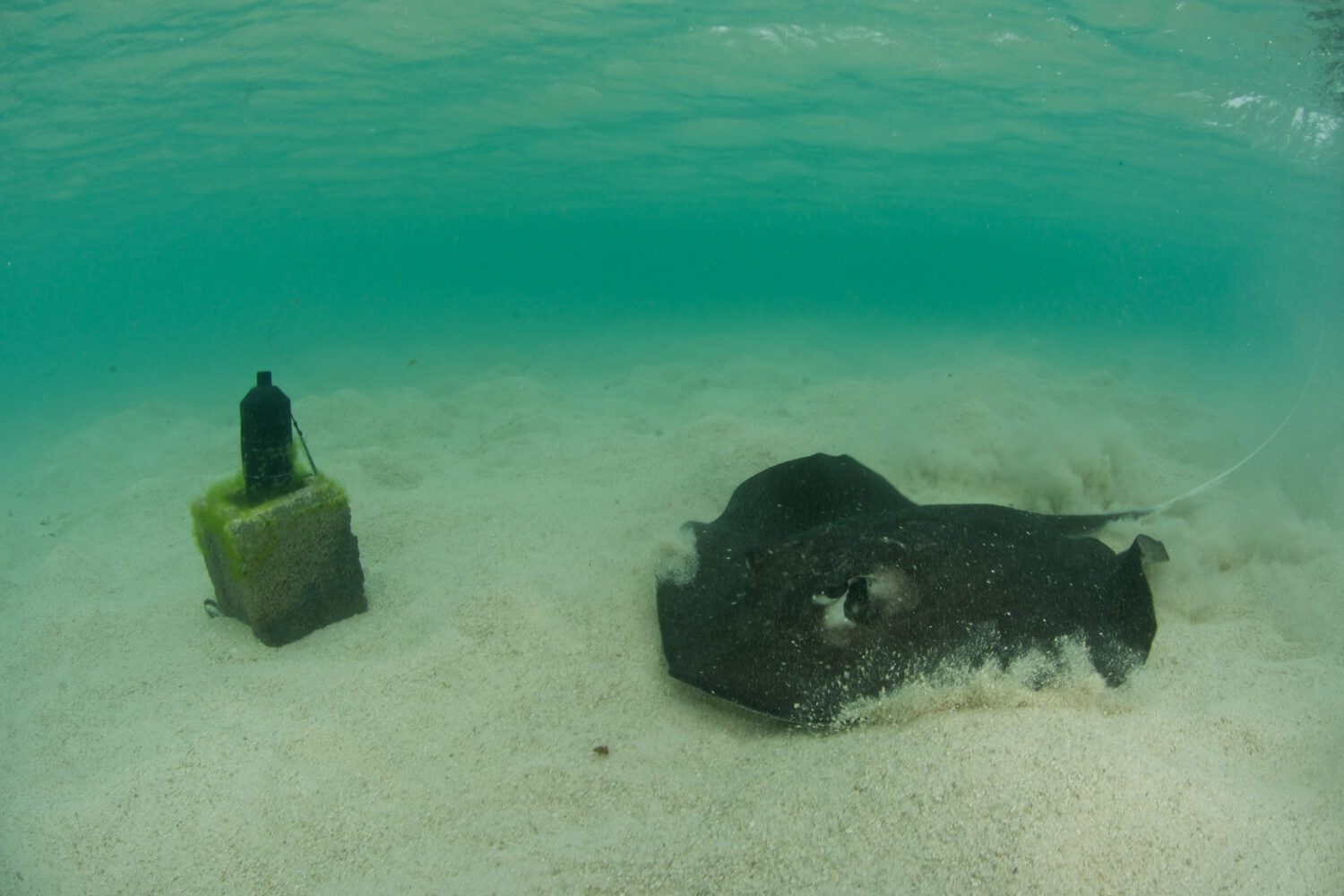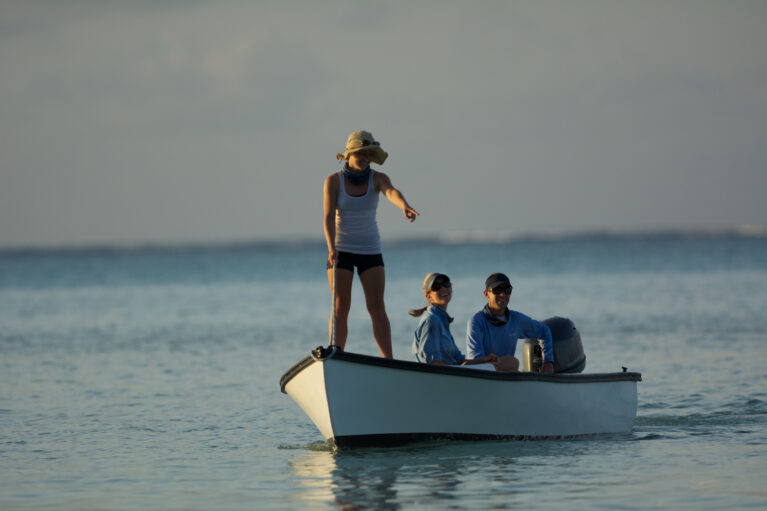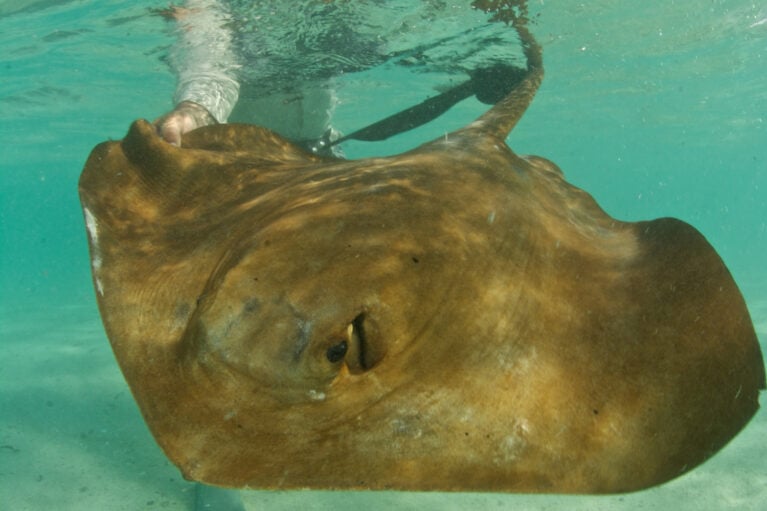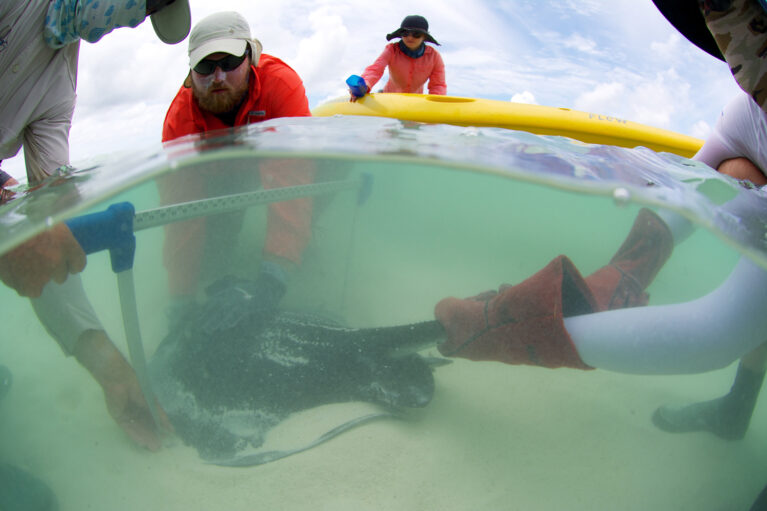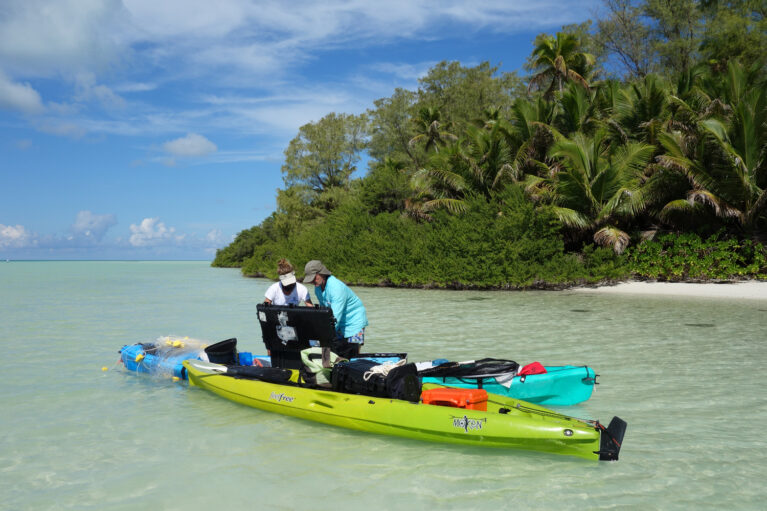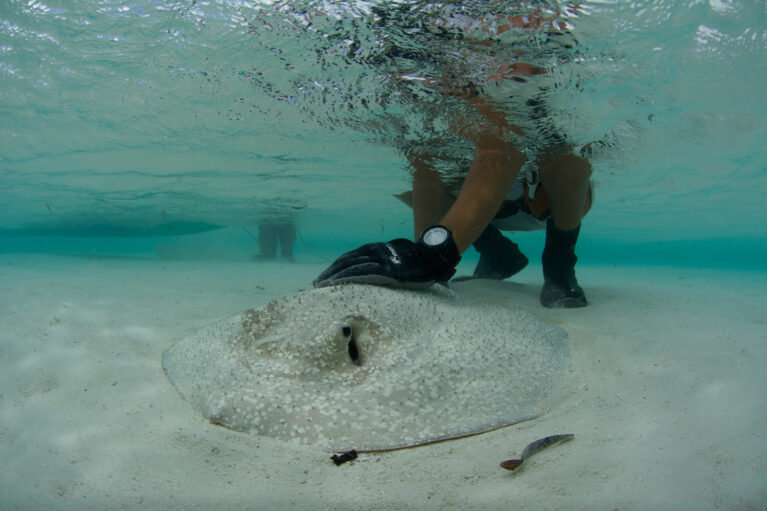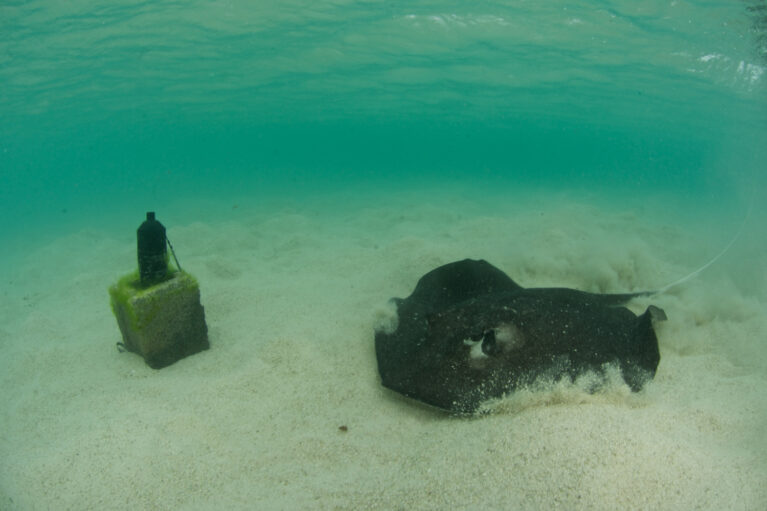Stingrays: Finding sanctuary in the shallows
Why might a whale shark choose to migrate thousands of kilometres? Or a Greenland shark choose to live in just-above-freezing waters? To conserve animals that are vulnerable to extinction, we need to understand why they choose to live where they do. We can then protect their preferred habitats and predict how they might respond to climate change.
This desire to understand the ‘why’ (the drivers) of where and how animals move is key to the mission of the Save Our Seas Foundation D’Arros Research Centre (SOSF-DRC). Based on the newly protected D’Arros Island and St Joseph Atoll, Seychelles, the team here works to monitor the many vulnerable species that call these waters home.
An aerial view of the sandflats of St Joseph Atoll. Photo by Michael Scholl | © Save Our Seas Foundation
Here, shallow reef flats scattered with sea-grass beds meet colourful coral outcrops that rise to the surface. It’s a natural ocean observatory – the perfect place to learn more about many species of sharks and rays, including stingrays. This diverse habitat is an important nursery area for three species in particular: the cowtail stingray, the mangrove whipray and the porcupine whipray.
Recently, researchers from the SOSF-DRC have been discovering more about how these stingrays move about here, and why. They tagged 60 individuals, 20 from each species, and tracked their movements in St Joseph Atoll for one year on average. They also recorded environmental factors, like the tides and temperatures, during this time.
There’s a good reason for this research. As Chantel Elston, an SOSF project leader and the lead author of the paper resulting from the investigations, explains: ‘Stingrays are really important for keeping oceans healthy, especially in tropical places like Seychelles.’ But unfortunately they’re in a lot of trouble, mainly because of overfishing.
The field work
So, would the stingrays prefer to spend time in the shallow reef flats or in the deeper lagoon? And why might this be? The researchers found that, in general, stingrays prefer the safety of the shallows, where they are less at risk from larger predatory sharks. But as the sun rises over St Joseph Atoll, the temperature rises too. And environmental extremes like very low tides or particularly high or low water temperatures push these rays into deeper waters, where conditions are more stable.
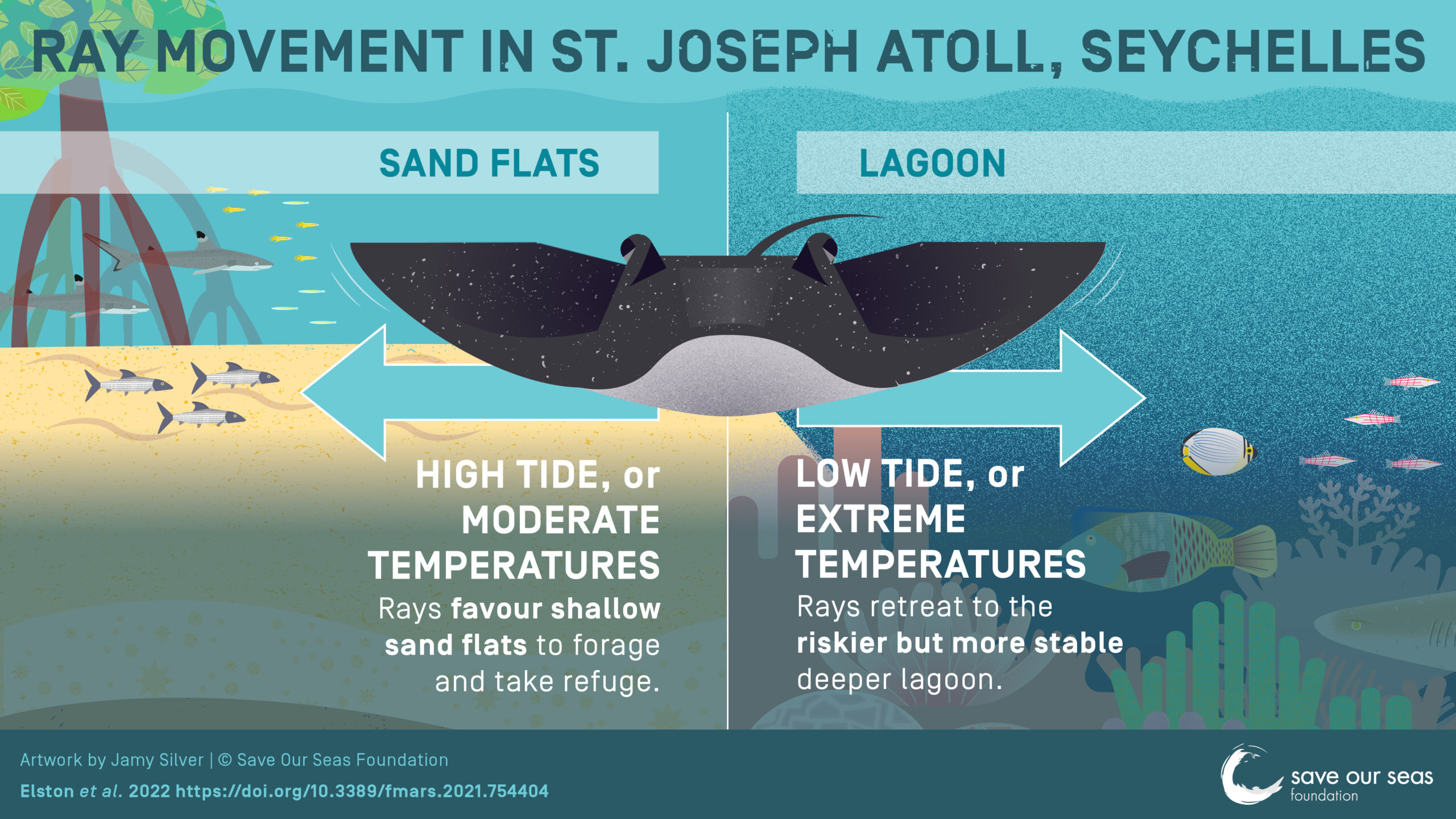
Artwork by Jamy Silver | © Save Our Seas Foundation
As the earth’s climate continues to change it’s likely that these extremes will become more common, changing the stingrays’ preferred habitat. And changes haven’t gone unnoticed at D’Arros Island and St Joseph Atoll. The reefs here are showing their resilience, gradually recovering after severe coral bleaching events across the Western Indian Ocean.
Stingrays on the shallow sand flats of St Joseph Atoll. Photo by Rainer von Brandis | © Save Our Seas Foundation
So what will the future bring for stingrays in Seychelles? Well, by learning more about them we are better able to protect them and predict how their priority habitats might change. Thankfully the waters surrounding D’Arros Island and St Joseph Atoll have already been recognised as sanctuaries for marine life by the Seychellois government, which has recently announced new marine protected areas here.
- Helena Sims, SOSF Seychelles ambassador.
And when it comes to marine management, the Seychellois are ahead of the game – 30% of Seychelles’ waters will soon be protected, well before the 30×30 international target.
A mangrove whipray in the deeper waters of the atoll. Photo by Rainer von Brandis | © Save Our Seas Foundation
It’s easy to see why research and conservation are the main activities at D’Arros and St Joseph Atoll today. The pristine environment here supports an incredible array of species, providing the perfect opportunity for us to dive into the intricate lives of vulnerable marine life. Since 2004 the SOSF-DRC has been on a mission to preserve and showcase the ecological integrity of the waters here, through research, monitoring, restoration and education.


